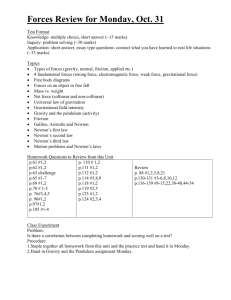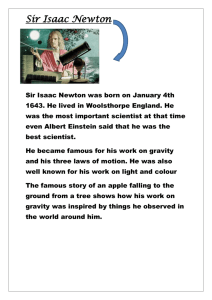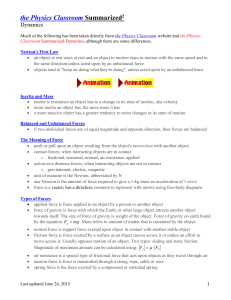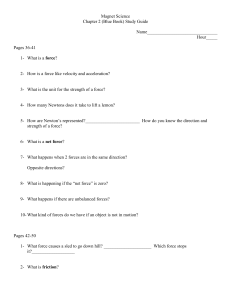History of Motion
advertisement
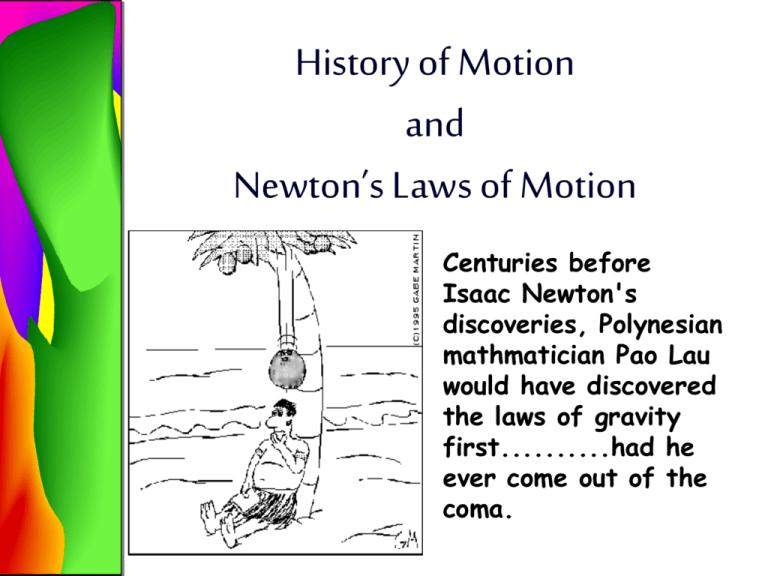
History of Motion and Newton’s Laws of Motion Centuries before Isaac Newton's discoveries, Polynesian mathmatician Pao Lau would have discovered the laws of gravity first..........had he ever come out of the coma. Key Words • Force – a push or a pull on an object (unit = Newton) History of Motion • Greeks – established that forces cause motion Aristotle • Natural motion – resting places • Violent motion – imposed motion • Earth didn’t move (natural motion) but the heavens (stars) operated on a model of perpetual motion. Copernicus • Earth moved around the sun Galileo • Established that forces ARE NOT needed to keep objects in motion. • Came up with the idea of inertia • Inertia – The tendency of an object to resist a change in motion. • Inertia depends upon only its mass • Also recognized the concept of frame of reference. Newton • Developed 3 laws of motion • Developed the Law of Universal Gravitation Newton’s First Law • Unless acted upon by an unbalanced force, an object will maintain a constant velocity (direction and speed). • Law of Inertia Example: st 1 Law Newton’s Second Law • Acceleration of an object equals the net force on that object divided by its mass. • a = ∑F/m or ∑F = m a • F (unit is Newton) • Newton = kg x m/s2 • m (unit is kg) • a (unit is m/s2) Example: nd 2 Law • Which accelerates more when the same amount of force is applied? What kind of relationship is between a & m? What would the graph look like? Example: • If dropped from the same height, which would have more force when it hit the ground? nd 2 Law What kind of relationship is between m & f? nd 2 Law and gravity • Reminder: acceleration of an object due to gravity on earth is 9.80 m/s2 • Weight is the force of gravity on the mass of an object. • Mass is constant, weight changes with gravity nd 2 Law and gravity Newton’s Third Law • All forces come in pairs that are equal in magnitude (size) and opposite in direction. Characteristics of rd 3 Law • Always in pairs • Equal in strength • Opposite in direction • Occur at the same time • DON’T act on the same object (that’s why they don’t cancel) Example: rd 3 Law • Action = ball hits bat • Reaction = bat hits ball (with the same amount of force) Example: rd 3 Law • Action = Tire pushes on the road • Reaction = road pushes on the tire nd 2 Newton’s Law Formulas F = ma W = mg a = g sin θ 1 lb = 4.448 N Vf = Vi + at d = Vi t + ½ at2 2ad = Vf2 – Vi2 d = Vf + Vi t 2 or d = ½ Vf + Vi t


